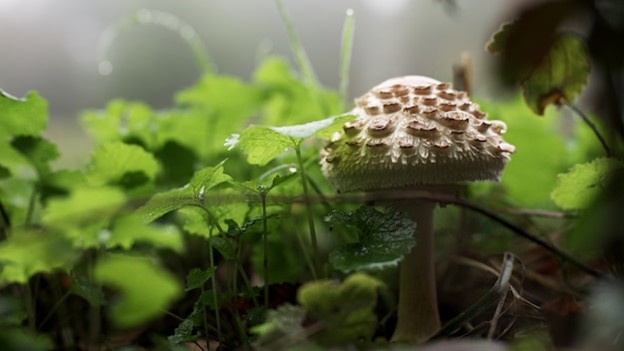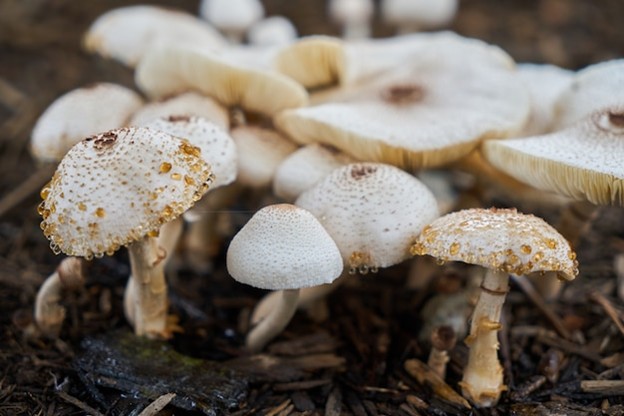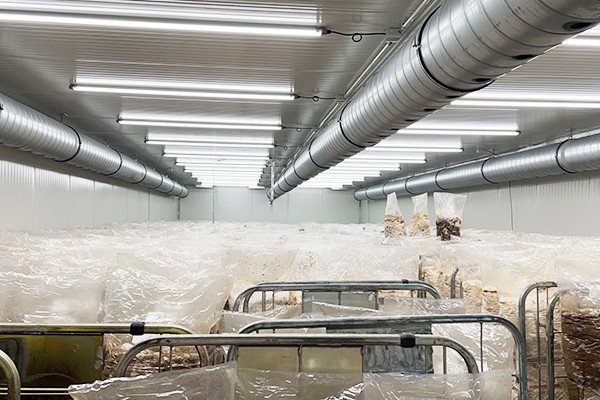Mushroom vertical farming refers to the practice of cultivating mushrooms in vertically stacked layers or shelves, optimizing the use of space. By growing mushrooms in vertical modules or racks, farmers can multiply crop yields many folds on a smaller footprint of land. Proper lighting is one of the most important aspects of mushroom vertical farming to consider, as some mushrooms require specific light conditions to grow nutritious fruits. Other critical factors include choosing the right growing substrate, maintaining suitable temperature and humidity levels, and ensuring adequate ventilation.
Understanding the Basics of Growing Mushrooms
When setting up for mushroom vertical farming, it is essential to understand the basic requirements for mushroom cultivation. Mushrooms grow from mycelium, the thread-like roots of fungi. Farmers use sterile growing substrates like sawdust, wheat bran, or coco coir to plant mycelium cultures and allow the roots to spread throughout the material. Optimal environmental conditions like temperature, gas exchange, and moisture help mycelium thoroughly colonize the substrate over 2-3 weeks. Once fully colonized, the substrate is induced to form mushrooms by adjusting factors such as fresh air flow, humidity, and light exposure.
The relevance of light in mushroom growth cannot be understated. Vertical farming mushrooms requires a specific light spectrum and intensities for mushrooms’ crucial metabolic processes and tissue development. Too little or too much light can suppress mushroom formation and impact crop yields. Carefully designing a lighting plan specific to the mushroom variety is important for vertical farming success.
The Role of Lighting in Mushroom Growth
When it comes to mushroom cultivation, the type and dosage of light play a key directing role. Different mushroom varieties require distinct light spectra for optimal growth, ranging from complete darkness for some underground fungi to partial light for oyster mushrooms. LED lights have become a popular choice for indoor mushroom vertical farming due to characteristics like tunable wavelengths, energy efficiency, and precise light intensities.
LEDs allow farmers to simulate ideal daylight conditions for maximum mushroom production. For example, blue and red LED spectrums mimic sunlight and stimulate fruiting in many edible fungi. Their brightness is also adjustable to change light levels as mushrooms transition between colonization and fruiting stages. Compared to traditional lighting sources, LEDs provide more uniform coverage while using less electricity. This makes them especially suitable for vertical systems with multiple canopy levels.
Light intensity and duration are equally important for mushroom growth cycles. While mushrooms don’t need light to grow, light does affect them. Most mushrooms need some indirect light for proper formation and shaping of caps and stipes. Intensity levels may vary from species to species during specific developmental phases. Maintaining illumination best practices aligned with a mushroom’s biology leads to higher mushroom yields on vertical farms.
Tips on Setting Up Your Vertical Mushroom Farm
Following proper guidelines is crucial for starting a successful mushroom vertical farming operation. Here are some tips:
- Assembling the Structure
Build modular racks or shelves with easily cleanable materials arranged in multiple layers for superior space utilization.
- Choosing the Right Substrate and Containers
Select appropriately sized bags, jars, or trays based on mushroom type and consider pasteurization or sterilization methods.
- Positioning the Grow Lights
Arrange LED fixtures equipped with recommended spectrums above canopy levels, maintaining light intensities for individual stages.
- Light Timing for Different Stages
Program lights on/off cycles matching mycelial colonization and fruiting requirements for each mushroom variety.
- Temperature and Humidity Control
Monitor and regulate climatic factors within ideal ranges through misters, fans, and ventilation management.
- Ventilation and Airflow
Ensure adequate air exchange to remove heat and gases and maintain microclimates without drying mushrooms.
Product Highlight: T14L LED MUSHROOM LIGHT
As a leading agricultural lighting solutions provider, Hontech-Wins offers a comprehensive portfolio of professional growing mushroom lighting customized for various plant growth applications. With over a decade of industry experience, we are committed to product innovation and quality manufacturing. We aim to help customers maximize crop yields through reliable, high-performance lighting equipment and expert technical guidance.
At Hontech-Wins, the T14L LED MUSHROOM LIGHT is one of our popular products. It is ideal for mushroom vertical farming. Its key characteristics include:
- Long operational lifetime for reduced operational costs
- Waterproof casing suitable for high-humidity environments
- -20°C to 50°C operating temperature range
- High power factor (PF>9) for energy efficiency
- International safety certifications, e.g., CE, RoHS, ETL, etc.
Conclusion
Overall, successful mushroom vertical farming requires attentive planning and management. Proper lighting setup aligned to the crop’s photo requirements is essential. Starting your vertical mushroom farm on the right footing will help maximize harvests and profitability. Hontech-Wins offers a comprehensive suite of professional LED solutions designed specifically for different plant growth stages in controlled indoor agriculture. Our lighting experts can recommend fixtures optimized for your unique mushroom operation. Contact us to learn more about our agricultural lighting products and consultation services.


